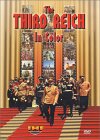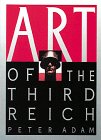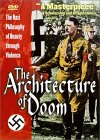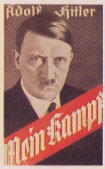HISTORY
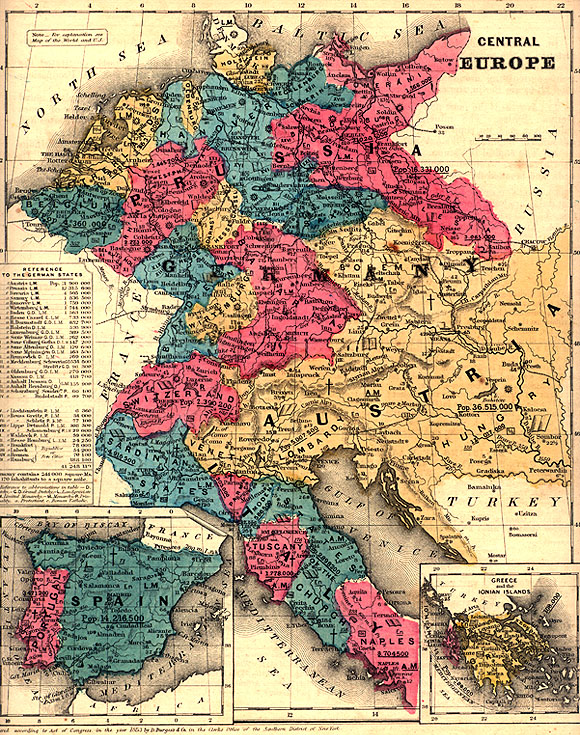 Unsurprisingly for a country whose land has so often been at history's crux, the moods and preoccupations of Germany's people are reflected in a rich artistic heritage: from the claustrophobic beauty of its cathedrals to classical films from the silent era of cinema, from the most influential philosophers (try Kant, Hegel, Nietzsche and Marx for starters) to some of the world's great physicists (Einstein and Planck), from the cream of classical composers (Bach, Beethoven, Brahms, Handel and Wagner) to contemporary industrial-grunge music and Krautrock, from the genius of Goethe to the revolutionary theatre of Brecht, Germany has it all. The scope of German art is such that it could be the focus of an entire visit.
Unsurprisingly for a country whose land has so often been at history's crux, the moods and preoccupations of Germany's people are reflected in a rich artistic heritage: from the claustrophobic beauty of its cathedrals to classical films from the silent era of cinema, from the most influential philosophers (try Kant, Hegel, Nietzsche and Marx for starters) to some of the world's great physicists (Einstein and Planck), from the cream of classical composers (Bach, Beethoven, Brahms, Handel and Wagner) to contemporary industrial-grunge music and Krautrock, from the genius of Goethe to the revolutionary theatre of Brecht, Germany has it all. The scope of German art is such that it could be the focus of an entire visit.
Arguably the finest artist Germany has produced, Johann Wolfgang von Goethe (1749-1832) was a poet, dramatist, painter, scientist and philosopher. His greatest work, the drama Faust, is a masterful epic of all that went before him, as the archetypal human strives for meaning. The ghost of Goethe inhabits the soul of Germany. Germany has also been endowed with many exceptional visual artists. The gothic sculpture of Peter Vischer and his sons, the renaissance portraiture of Albrecht Dürer and the baroque architecture of Balthasar Neumann are all magnificent examples in their fields. A steadfast commitment to excellence in artistry persists in more recent forms, with Germany a notable producer of excellent and challenging cinema from Rainer Werner Fassbinder and Werner Herzog, among others.
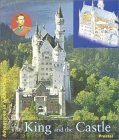 Germany's artistic diet, rich though it is, has nothing on its food. This is traditionally a meat-and-potatoes kind of country. Though vegetarian and health-conscious restaurants are starting to sprout, it's best to stop counting calories and cholesterol levels while in Germany. The assault begins with a good German breakfast: rolls, jam, cheese, cold meats, hard-boiled egg and coffee or tea. To be fair, many Germans have switched to lighter breakfasts like cornflakes or muesli, but visitors can still be served the traditional cut meat and jam. Lunch is the main meal of the day, but breakfast is so big you'd be forgiven for just picking up a midday bratwurst from the ubiquitous Imbiss (takeaway-food stand). Dinner is allegedly a lighter meal, but this can still mean a plate full of sausages and dumplings. (Light eaters may want to opt for international cuisine from Germany's immigrant communities.) Beer is the national beverage and it's one cultural phenomenon that must be adequately explored. The beer is excellent and relatively cheap. Each region and brewery produces beer with a distinctive taste and body. Impromptu visits to small breweries are better than adding your bulk to the already crowded festivals like Munich's Oktoberfest. In winter, you can experience the glorious haze induced by Glühwein, a hot, spicy mulled wine guaranteed to take the chill away.
Germany's artistic diet, rich though it is, has nothing on its food. This is traditionally a meat-and-potatoes kind of country. Though vegetarian and health-conscious restaurants are starting to sprout, it's best to stop counting calories and cholesterol levels while in Germany. The assault begins with a good German breakfast: rolls, jam, cheese, cold meats, hard-boiled egg and coffee or tea. To be fair, many Germans have switched to lighter breakfasts like cornflakes or muesli, but visitors can still be served the traditional cut meat and jam. Lunch is the main meal of the day, but breakfast is so big you'd be forgiven for just picking up a midday bratwurst from the ubiquitous Imbiss (takeaway-food stand). Dinner is allegedly a lighter meal, but this can still mean a plate full of sausages and dumplings. (Light eaters may want to opt for international cuisine from Germany's immigrant communities.) Beer is the national beverage and it's one cultural phenomenon that must be adequately explored. The beer is excellent and relatively cheap. Each region and brewery produces beer with a distinctive taste and body. Impromptu visits to small breweries are better than adding your bulk to the already crowded festivals like Munich's Oktoberfest. In winter, you can experience the glorious haze induced by Glühwein, a hot, spicy mulled wine guaranteed to take the chill away.
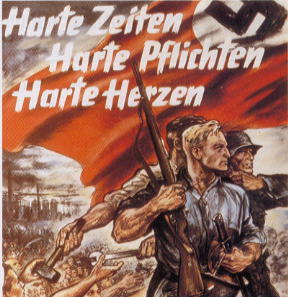 Germany's hill-and-trough history kicked in early: from the time that everyone's favourite fossils, the Neanderthals, left their jaw-jutting remains in the Neander Valley near Düsseldorf, this joint has been in the thick of it. All of Europe's great empires got their paws into Germany, but none was ever able to count all its inhabitants as faithful subjects. Different pockets of fierce resistance met the Roman legions (50 BC to the 5th century AD), the Frankish conqueror, Charlemagne (up to the early 9th century), and Otto the Great's Holy Roman Empire (from late in the 10th century). By the time the house of Habsburg, ruling from Vienna, took control in the 13th century it was little more than a conglomerate of German-speaking states run by parochial princes.
Germany's hill-and-trough history kicked in early: from the time that everyone's favourite fossils, the Neanderthals, left their jaw-jutting remains in the Neander Valley near Düsseldorf, this joint has been in the thick of it. All of Europe's great empires got their paws into Germany, but none was ever able to count all its inhabitants as faithful subjects. Different pockets of fierce resistance met the Roman legions (50 BC to the 5th century AD), the Frankish conqueror, Charlemagne (up to the early 9th century), and Otto the Great's Holy Roman Empire (from late in the 10th century). By the time the house of Habsburg, ruling from Vienna, took control in the 13th century it was little more than a conglomerate of German-speaking states run by parochial princes.
The Habsburgs muddled on until the devastating Thirty Years War (1618-48), sparked by ongoing religious and nationalist conflicts. Europe had been simmering ever since 1517 when Martin Luther tacked 95 suggestions for improved service to his local church door in Wittenburg. It took a bloody good stoush to settle everyone down and secure the rights of both Protestants and Catholics. Germany lost a third of its population in the process. Local princes assumed complete sovereignty over a patchwork of some 300 states, which made it all too easy for Napoleon to come along in the early 19th century and start adding them to his scrapbook. The French never quite managed to subdue Prussia, which became the centre of German resistance. It was Prussia that led the 1813 war that put an end to Napoleon's German aspirations in a decisive battle at Leipzig. In 1866 Otto von Bismarck, chancellor of Prussia, annexed most of Germany, consolidating his position as biggest wig in Europe with a resounding victory over France in 1871. The Prussian king, Wilhelm I, was instated as Kaiser and a united Germany hit the world stage for the first time.
Wilhelm II dismissed Bismarck in 1890, lingered long enough to lead Germany into WWI, then snuck off to Holland in 1918 when he realised war wasn't going to end in a ticker-tape parade. Germany struggled with civil unrest and a disastrous peace, uniting only in dislike of the reigning Weimar Republic. Then came Adolf Hitler, an Austrian drifter and German army veteran who was able to turn general disaffection into a focussed lunacy. In 1933 his National Socialist German Worker's (or Nazi) Party assumed ultimate authority over Germany. Extravagant military spending and blasé border bending gave way to outright aggression, WWII, and the unrivalled horror of the Holocaust. Even the Germans were surprised by the success of their initial invasions, but by 1943 a litany of heavy losses set the tone for the sluggish march to 1945's unconditional surrender.
 Postwar Germany was divided up between the Allies, with Britain, France and the USA consolidating the western portion into the Federal Republic of Germany, and the Soviet zone transmogrifying into the communist German Democratic Republic. This formula for division was repeated in Berlin. West Germany received massive injections of US capital, attracting many workers from the miserable economic conditions in the East until some bright spark had the idea of building a wall around West Berlin and sealing the rest of the border. The Cold War's icy eye focussed on Berlin. Over the next 25 years West Germany became one of the world's most prosperous nations while its communist Siamese sibling suffered. The collapse of communism in Eastern Europe has no more poignant symbol than the opening of the Berlin frontier. That was one of world history's better parties at the Berlin Wall in late 1989.
Postwar Germany was divided up between the Allies, with Britain, France and the USA consolidating the western portion into the Federal Republic of Germany, and the Soviet zone transmogrifying into the communist German Democratic Republic. This formula for division was repeated in Berlin. West Germany received massive injections of US capital, attracting many workers from the miserable economic conditions in the East until some bright spark had the idea of building a wall around West Berlin and sealing the rest of the border. The Cold War's icy eye focussed on Berlin. Over the next 25 years West Germany became one of the world's most prosperous nations while its communist Siamese sibling suffered. The collapse of communism in Eastern Europe has no more poignant symbol than the opening of the Berlin frontier. That was one of world history's better parties at the Berlin Wall in late 1989.
As a result of the reunification of Germany, the Helmut Kohl era was recorded as one of the most dramatic periods in the country's history. After 16 years, however, it came to an end when a coalition of Social Democrats and Greens took office in 1998. Two years later, an investigation was launched which uncovered that Kohl and his conservative Christian Democratic Union party had operated a slush-fund in defiance of the German constitution.
Today's united Germany has its problems, but the social dislocation which was widely forecast has been minimal. Although the euphoria of reunification has subsided, and there is some resentment and disaffection from both sides, Germany is working towards true unity in typically sedulous fashion. The extreme right wing, although insidious and occasionally violent, is politically weak. Germany has absorbed the majority of refugees from the former Yugoslavia, and these and other immigrants are targets of renewed racist attacks.


|
